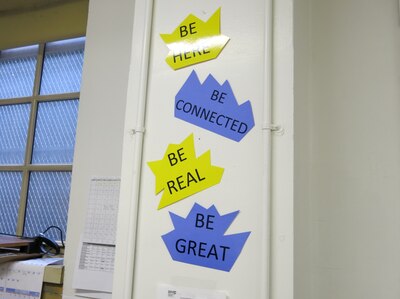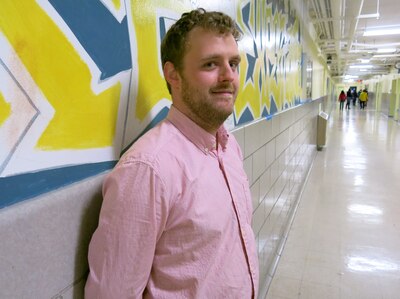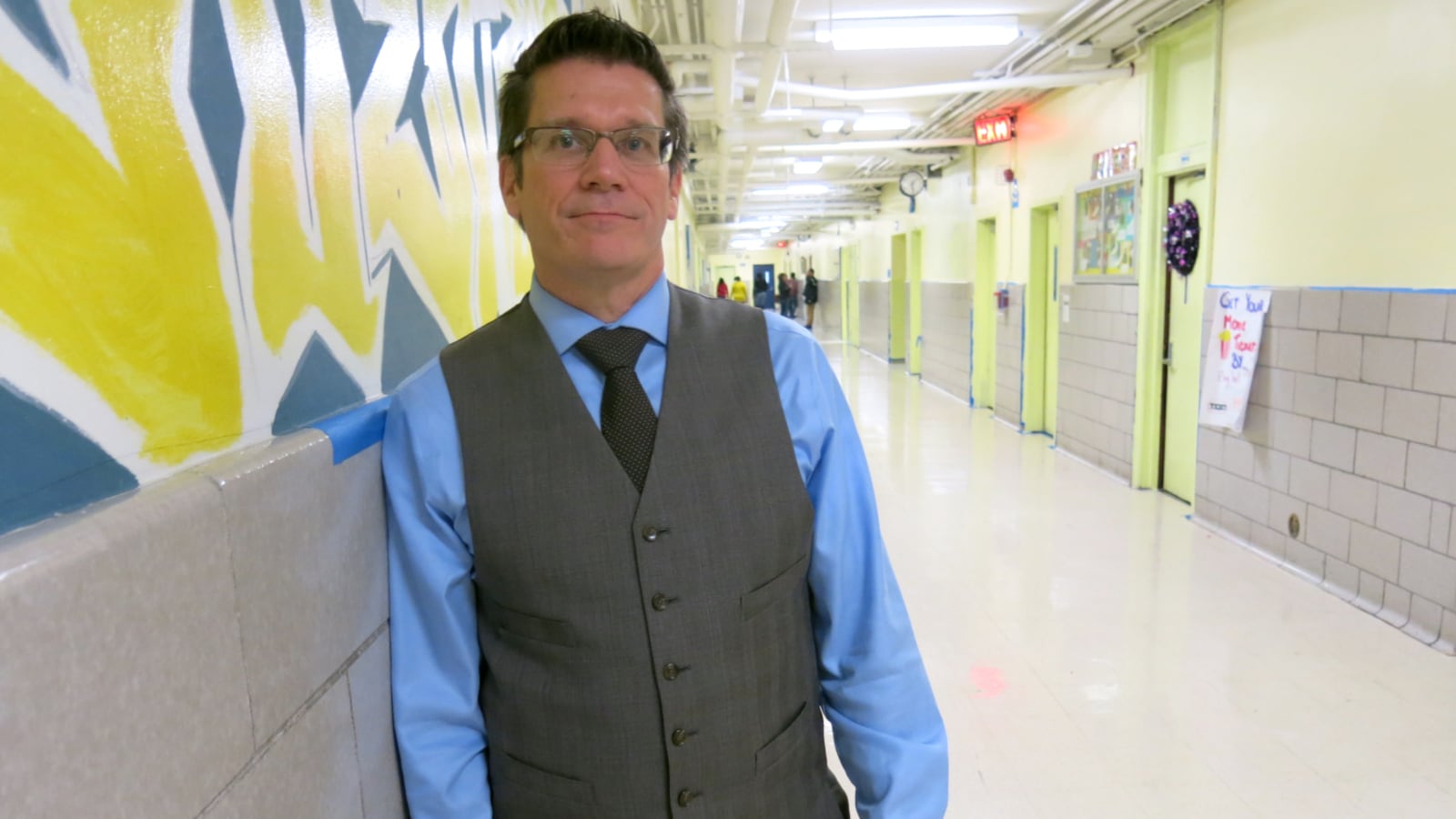Longtime teacher and principal James Waslawski watched many students get stuck in middle school.
Maybe they were homeless and drifting in and out of the system, or bad choices — perhaps triggered by trauma at home or in the streets — kept them in trouble and out of class. Maybe they had a disability, or they just couldn’t keep up with the work, so they were held back again and again.
Whatever the cause, he knew of 14 and 15-year-olds stuck in sixth and seventh grade, and eighth-graders older than some seniors in high school. In fact, the city has more than 50,000 middle-school students who are older than their peers, but only enough specialized programs to serve a few hundred of them.
Waslawski’s idea was to create a middle school just for those students who are overage and off track. The result, New Directions Secondary School, opened last year on the basement floor of the towering Taft High School building in the South Bronx.
It is for students, Waslawski said, like the 15-year-old seventh-grade student with severe attention problems who used to stray out of class but is steadily completing more work under the school’s close supervision.
“He’s a genius – a genius,” Waslawski said. Yet, “at other schools, he’s going to be managed, he’s going to be suspended, he’s going to be gone.”
Not unexpectedly, New Directions has at times tottered under the weight of its mission: Behavior problems have cropped up, last year’s test scores were exceptionally low, and some of its founding teachers expressed doubts. But students accustomed to rocky relationships with their past schools, including one who hadn’t attended classes anywhere for three years, have actually started to show up regularly to New Directions, relying as much on the personal support as the academic help.
Students and staff say the school’s model — small classes, lots of counselors, online learning, and a less punitive discipline system — is starting to take hold, even if it has yet to fully take off.
“They’re trying to work with a population that is probably the most difficult in New York,” said Nate Dudley, the head of the support network responsible for the school. “We knew that this was going to be tough – and it is tough – but it’s still hopeful.”
Meeting students where they are

When Waslawski opened New Directions in July 2013 after a year of planning, it was one of the first schools of its kind in the city.
While there are dozens of programs able to serve thousands of high-school students who fall behind, fewer than 450 slots exist in programs for overage middle school students, according to a recent report by the nonprofit Advocates for Children. Many of those middle-school programs are designed primarily for eighth-graders or students with particular problems, such as substance abuse.
Borrowing a practice from alternative high schools, Waslawski brought in a nonprofit, Wediko Children’s Services, to provide counselors and run student-support sessions on topics from marijuana use to the way students must “code switch” as they adapt their behavior to school or work.
Sometimes the school must go to the students. Waslawski and a counselor recently gathered several service providers and case workers for a meeting at a student’s house. Other times, they attend students’ court appearances. The idea is that crises at home rarely stay there.
“If you’re in temporary housing and you’ve been up all night,” said Paul Allison, an English and social studies teacher, “it’s hard to concentrate on your work.”
When students act up, the school tries to avoid suspending them, since many went off course at their old schools because their misbehavior kept them out of class. Instead, a student might help paint the school on a Saturday or interview peers and teachers about the harm his actions caused. A student who intentionally bumped into Waslawski was still suspended, but he also had to help serve lunch to his peers and create safety posters when he returned.
Another of New Direction’s central challenges is simply to get students to show up. Their average attendance rate at previous schools was 63 percent. New Directions has boosted that by about 10 percentage points, but the staff’s twice-weekly attendance meetings, texts and calls to students in the mornings, and attendance-based raffle tickets are designed to increase that number even further.
“This school cares more,” said eighth-grader Keyia, 15, who said she’s used to getting calls at home from faculty. “This school makes sure everybody is on point.”
Unchartered territory

By the time many students reach New Directions, they are in danger of dropping out of school completely.
Most have been held back before and many are far below grade level – one seventh-grade teacher said some of her students entered at a first-grade reading level. This was reflected in the school’s first-year state test results: Just 1 percent of students passed the English tests, and even fewer passed math.
As the school tries to catch students up, it is relying on technology — students do much of their work individually on laptops — and a “mastery-based” approach, where students must demonstrate a skill through tasks and projects before they can advance. The school would like to be able to promote students mid-year who complete their work rapidly, but it is still waiting for approval from the city, Waslawski said.
Next year, Waslawski plans to add the early high school grades, since he is convinced it will take several years to steer his students back onto the route to graduation. Along the way, he hopes the city will consider “fair metrics” to rate his school, since his students are starting from so far behind. (An education department spokesman said the city is still deciding how to evaluate New Directions due to its “particularly unique needs.”)
Beyond the very low test scores, the school also received poor reviews last year from some teachers. Only 38 percent of the faculty who took a city survey said they would recommend New Directions to parents, while 75 percent said that order and discipline are not maintained at the school. Half called Waslawski an effective manager.
Waslawski said the school’s approach to discipline and academics was new and challenging, and noted that three of the school’s original 11 teachers did not return. He said he had brought in new academic coaches to support his teachers, but creating a new school for struggling students is also inherently tough.
“This is the work,” he said. “This is what we signed up for.”
Ashley Grant, a staff attorney at Advocates for Children and the lead author of the report on overage middle-school students, said her 16-year-old client, an eighth-grader at New Directions, has already benefitted from being around classmates her age for “the first time in years.”
“New Directions is really in uncharted territory here,” she said.


